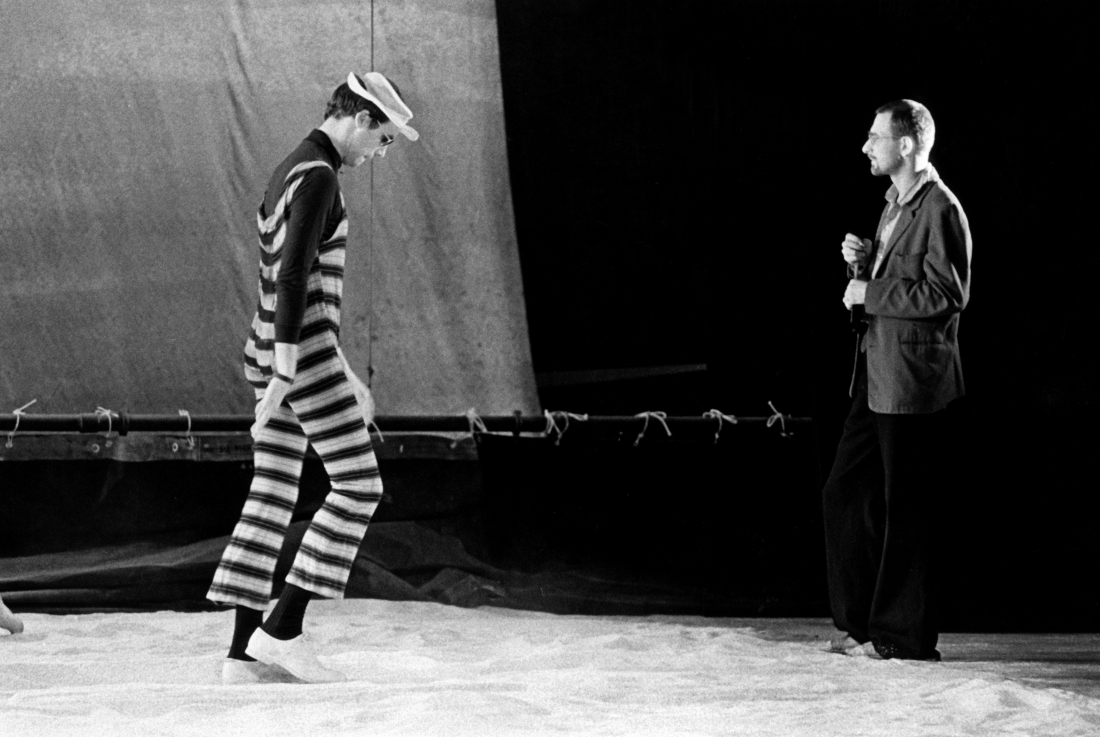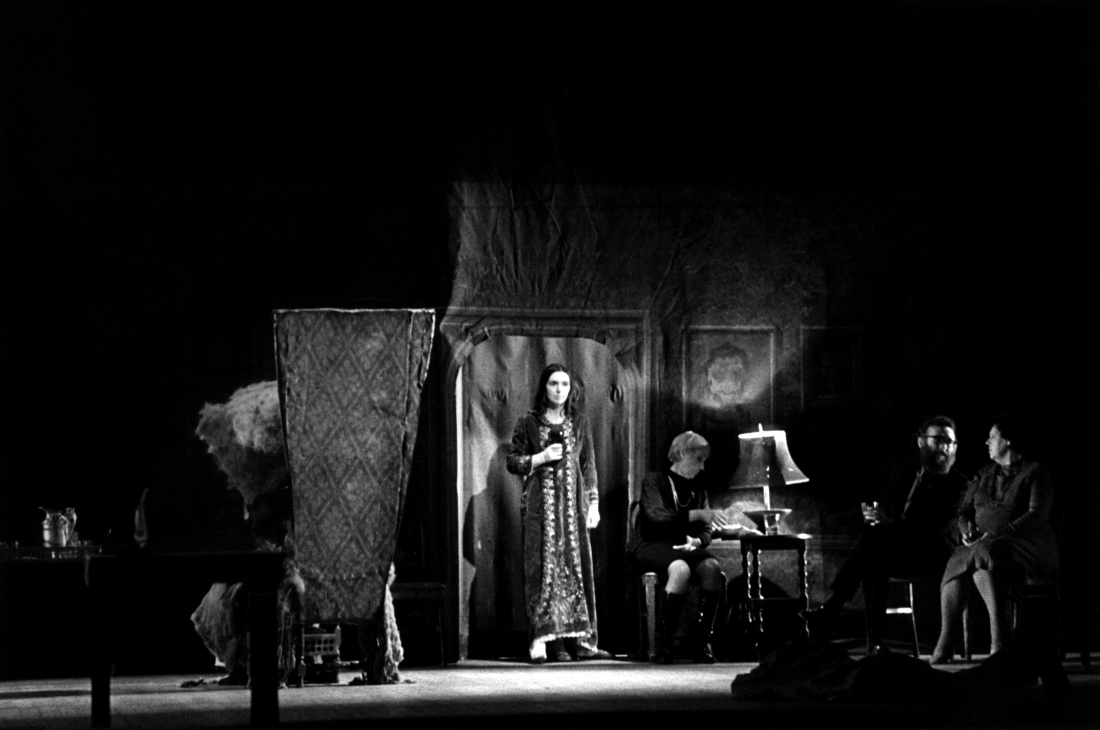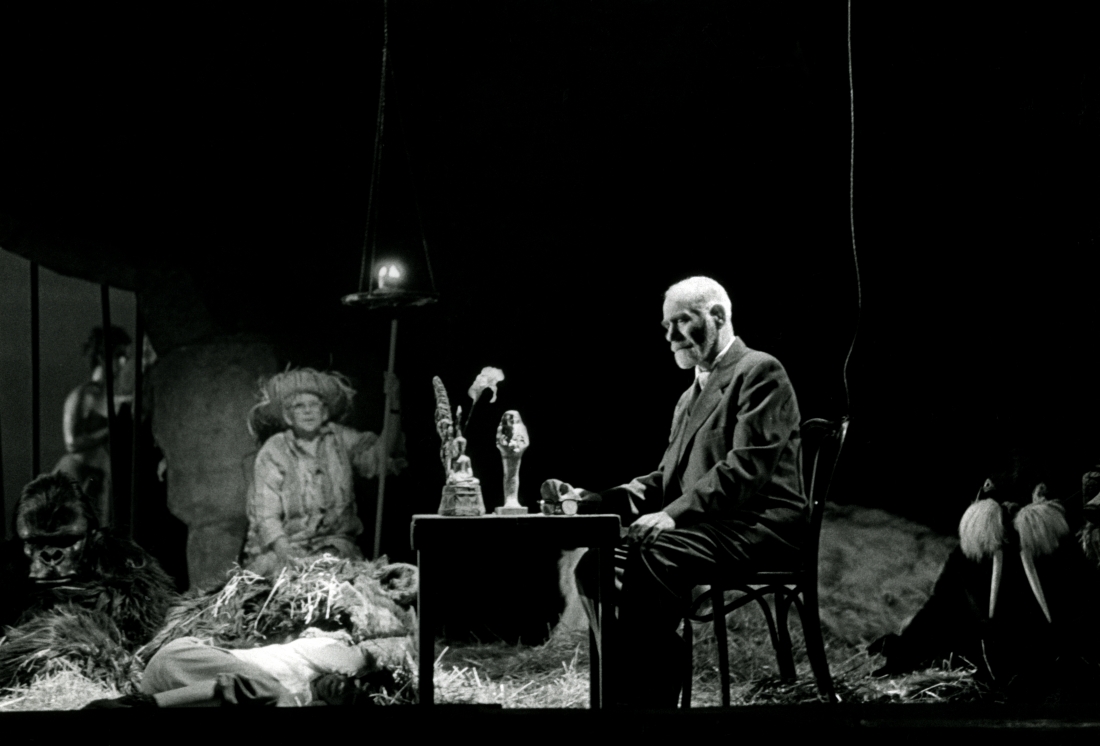The Life and Times of Sigmund Freud
By Robert Wilson
Performed by Robert Wilson and The Byrd Hoffman School of Byrds
Premiered on December 18, 1969 at the Brooklyn Academy of Music, Brooklyn, New York
Although only performed for four nights, The Life and Times of Sigmund Freud made a great impact on the New York art world. It was Wilson’s first piece to appear at the Brooklyn Academy of Music (BAM), and the first to feature the newly formed Byrd Hoffman School of Byrds. A review appeared in Vogue, with the comment “Robert Wilson, who devised this extraordinary play, is a twenty-six-year-old visionary director-writer who chooses only to work with non-actors and almost no words. For Freud, Wilson uses the stage as a slow, silent moving picture that he settles into strangely memorable, abrupt details in the flowing rhythms of dreams.” Consisting of three acts that meant to suggest the progression of Freud’s life, much of the previous year’s King of Spain had been reworked into Freud. After its brief run at BAM, avant-garde director Richard Foreman, in a nod of approval, wrote:
“Wilson has created one of the major stage works of the decade, based on an aesthetic quite different from…most of the current work of the theatrical avant-garde.”
Wilson said that this work is “not a historical but a poetic presentation of Freud’s life.” The setting of each of the three acts meant to suggest the progression of his life: a sunny beach (Freud’s childhood) gave way to a grey Victorian sitting room (Freud’s middle years), which in turn gave way to a dark cave (Freud’s final years).
M. Sondak, the actor who played Freud, was a jeweler from Coney Island who bumped into Wilson in Grand Central Terminal. So striking was his resemblance to the father of psychoanalysis that Wilson insisted he star in his new play. Wilson would also make use of the various artists who passed through the Byrd Loft in Soho. Both Jack Smith and Gordon Matta-Clark took part in this production, while Paul Thek came on board for Wilson’s next piece, Deafman Glance. This is all part of the charm of Wilson’s early work with the Byrds: it was artists and non-artists, jewelers and grandmothers, common and eclectic New Yorkers, all working together in a theatrical spectacle that delivers its viewers to uncommon dreams or shared hallucinations.
“Although only performed for four nights, The Life and Times of Sigmund Freud made a great impact on the New York art world. It was Wilson’s first piece to appear at the Brooklyn Academy of Music (BAM), and the first to feature the newly formed Byrd Hoffman School of Byrds. A review appeared in Vogue, with the comment “Robert Wilson, who devised this extraordinary play, is a twenty-six-year-old visionary director-writer who chooses only to work with non-actors and almost no words. For Freud, Wilson uses the stage as a slow, silent moving picture that he settles into strangely memorable, abrupt details in the flowing rhythms of dreams.” Consisting of three acts that meant to suggest the progression of Freud’s life, much of the previous year’s King of Spain had been reworked into Freud. ”




